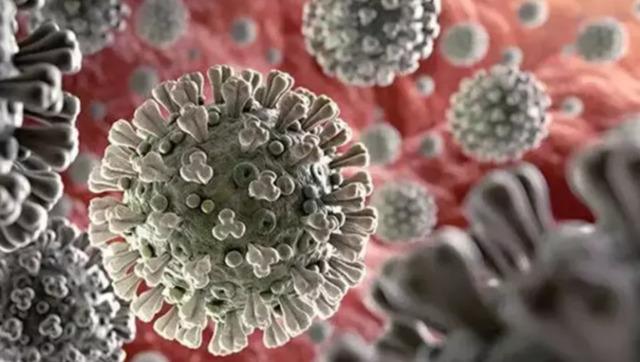The extremely rare disease persists today. In March, a man in New Mexico died of plague after being hospitalized, and in February, a person in Oregon was diagnosed with bubonic plague, thought to have been contracted from a pet cat.
Transmitted by fleas that live on rodents, symptoms of this disease usually appear one to seven days after infection and include painful, swollen lymph nodes called buboes in the groin, armpit or neck areas, as well as fever, chills and cough.
METHODS OF CONTAGION
Plague affects humans and other mammals, and people usually contract it after being bitten by rodent fleas that carry Yersinia pestis, the bacteria that causes the disease, or after touching an infected animal, according to the U.S. Centers for Disease Control and Prevention.
Cats that are sick themselves can infect humans directly, while more resistant dogs can carry fleas back to their owners. People can also become infected by breathing in droplets from the cough of an infected person or animal.
According to the CDC, the bacteria persists because it circulates at low levels among certain rodent populations. These infected animals and their fleas serve as long-term reservoirs for the bacteria.

“The reason it hasn’t been eradicated is because there is an animal reservoir. The bacteria can infect animals, and because we can’t treat all animals in the wild, it persists in nature and therefore occasionally causes a limited number of human cases,” Dr. Dan Barouch, director of the Center for Virology and Vaccine Research at Beth Israel Deaconess Medical Center, said in February.
IT IS SEEN IN AN AVERAGE OF 7 PEOPLE EVERY YEAR
Plague occurs naturally in rural areas of the western United States, particularly in Arizona, California, Colorado, and New Mexico. An average of seven human cases of plague are reported to the CDC each year, but significantly more cases occur in parts of Africa and Asia.

NEWS OF 584 DEATHS CAME IN 5 YEARS
According to the World Health Organization, 3,248 cases, including 584 deaths, were reported worldwide from 2010 to 2015. The three countries with the most outbreaks were the Democratic Republic of the Congo, Madagascar and Peru.
THERE ARE THREE TYPES
There are three types of plague – bubonic, septicaemia and pneumonic plague. In the pneumonic form of plague, which affects the lungs, there is a risk of direct human-to-human transmission. This was the case during the large outbreak in Madagascar in 2017, where there were 2,348 confirmed, probable and suspected cases and 202 deaths.
The CDC reports that the last urban plague outbreak in the United States occurred in Los Angeles in 1924-1925.

HOW WORRIED SHOULD I BE?
Modern antibiotics can prevent complications and death if given soon after symptoms appear. Treatment is used for the two most common types of plague: bubonic and pneumonic.
“The reason why plague caused such widespread death and destruction in the Middle Ages is because we didn’t have antibiotics at the time,” Barouch said in February.

EARLY DIAGNOSIS SAVES LIVES
“Although it can be a serious disease, if diagnosed early it is usually easily treated with antibiotics. So it is now a very treatable disease. It should not create the fear that the Black Death did in the Middle Ages. If someone develops symptoms consistent with plague then seek medical attention because in the early stages plague is easily treated with antibiotics,” it said.
According to the World Health Organization, bubonic plague has a mortality rate of 30 percent to 60 percent if left untreated, while pneumonic plague is always fatal if left untreated.
More than 80% of cases in the U.S. are the bubonic form, which is the most common type of infection. Untreated bubonic plague can develop into the more serious pneumonic plague, which causes rapidly developing pneumonia after the bacteria spread to the lungs.

IS THERE A VACCINE FOR PLAGUE?
Dr. Harish Moorjani, an infectious diseases specialist at Phelps Hospital, part of Northwell Health in New York, said in February that a Yersinia pestis vaccine is available but is only recommended for high-risk groups, such as scientists who work directly with the bacteria. “Most people don’t need the vaccine,” Moorjani said.
A 2019 review of experimental plague vaccines shows that researchers are exploring various approaches to developing an effective plague vaccine. Since different vaccine designs lead to different immune mechanisms, the authors concluded that combinations of different types could overcome the limitations of individual vaccines and effectively prevent a possible plague outbreak.

METHODS TO PROTECT YOURSELF AND YOUR FAMILY
Basic steps to preventing plague include eliminating rodent nesting sites around your home, sheds, garages and recreation areas by removing brush, rock piles, garbage and excess firewood.
Report sick or dead animals to law enforcement or local health officials; do not pick up or touch them yourself. If you absolutely must handle a sick or dead animal, wear gloves.
If you live in an endemic area, take extra precautions. Use insect repellent to prevent flea bites and treat dogs and cats regularly for fleas. Don’t sleep with your pets, as this increases your risk of contracting plague. Finally, your pets should not hunt or roam in rodent habitats, such as prairie dog colonies.
(CNN International)

